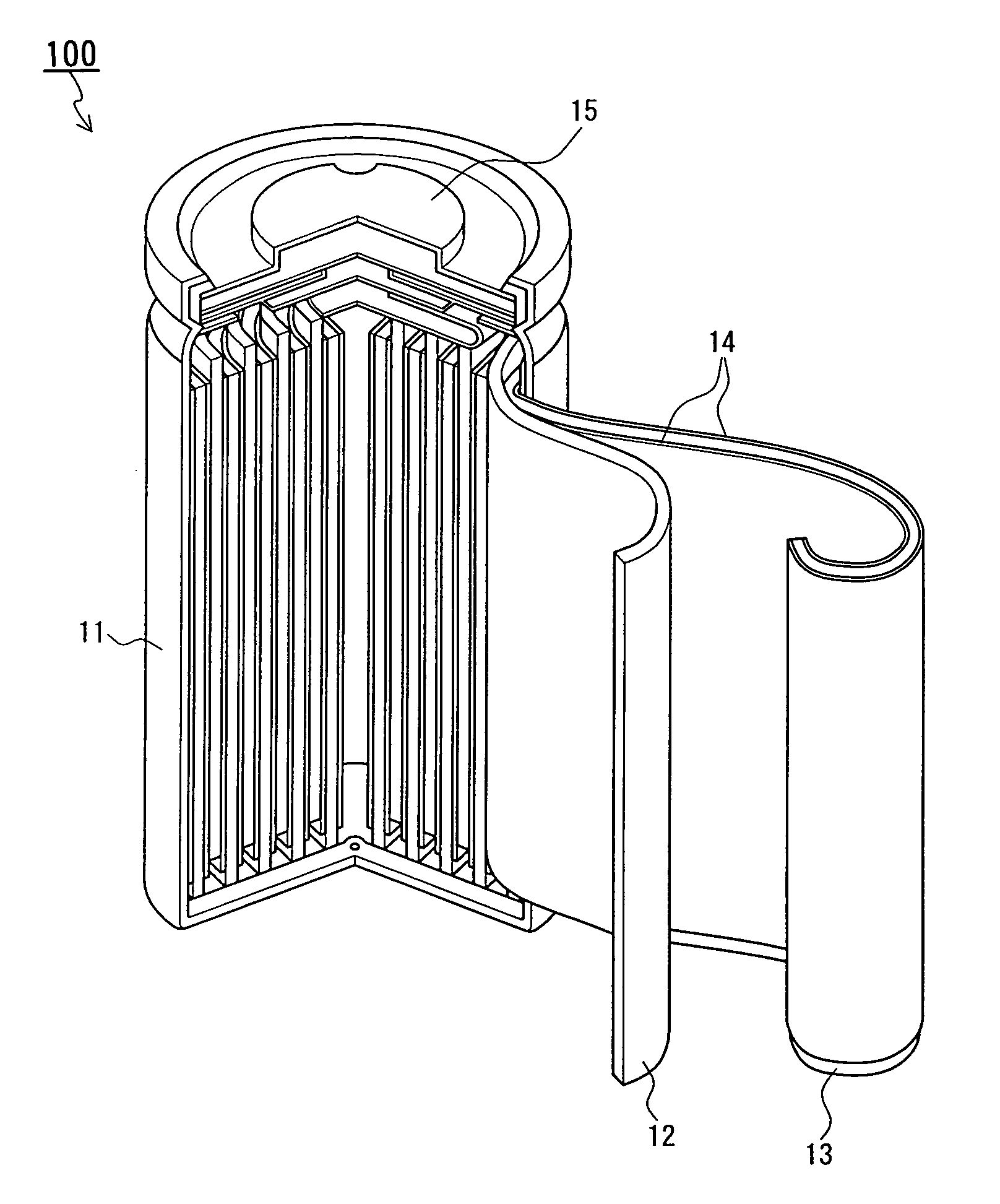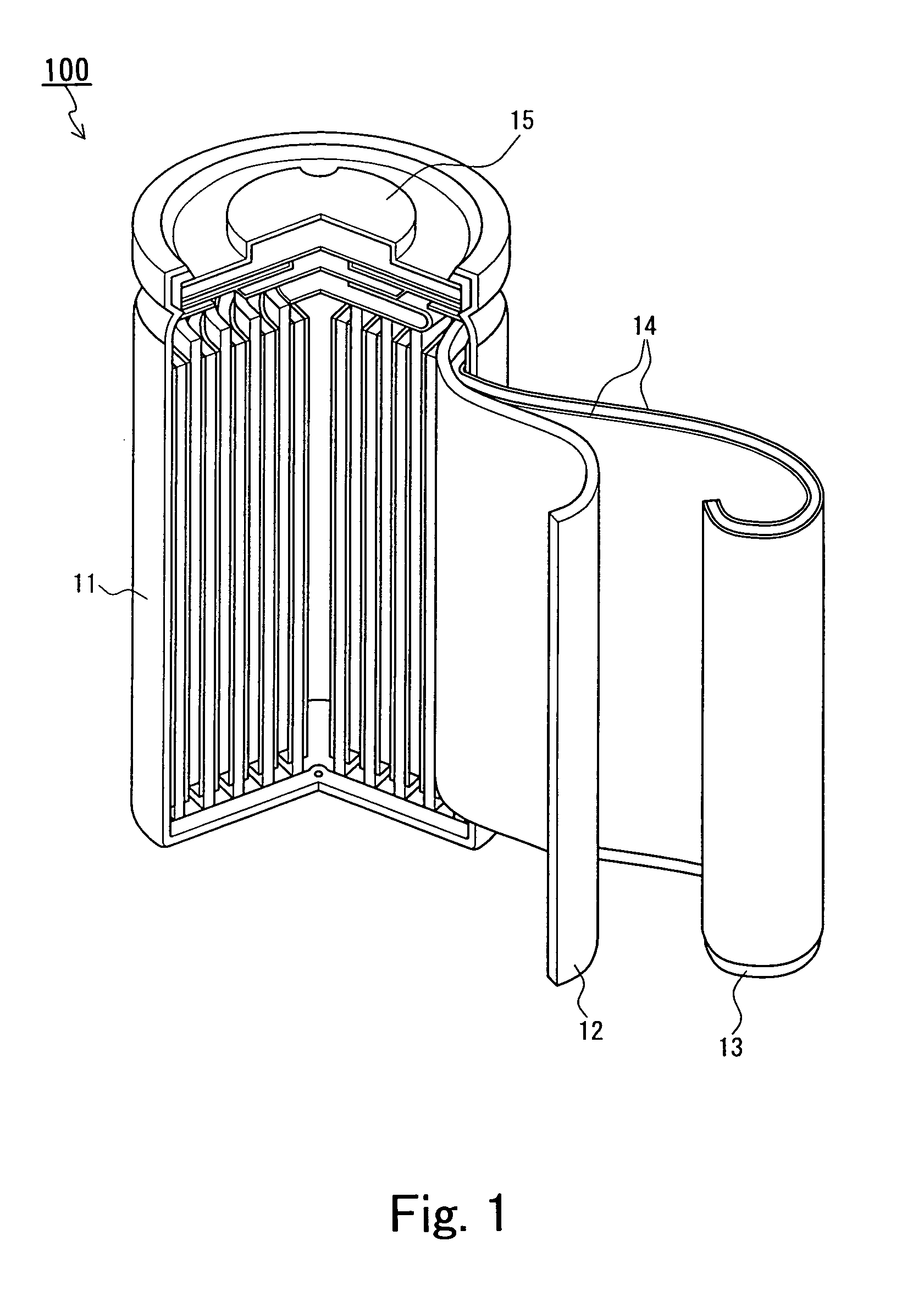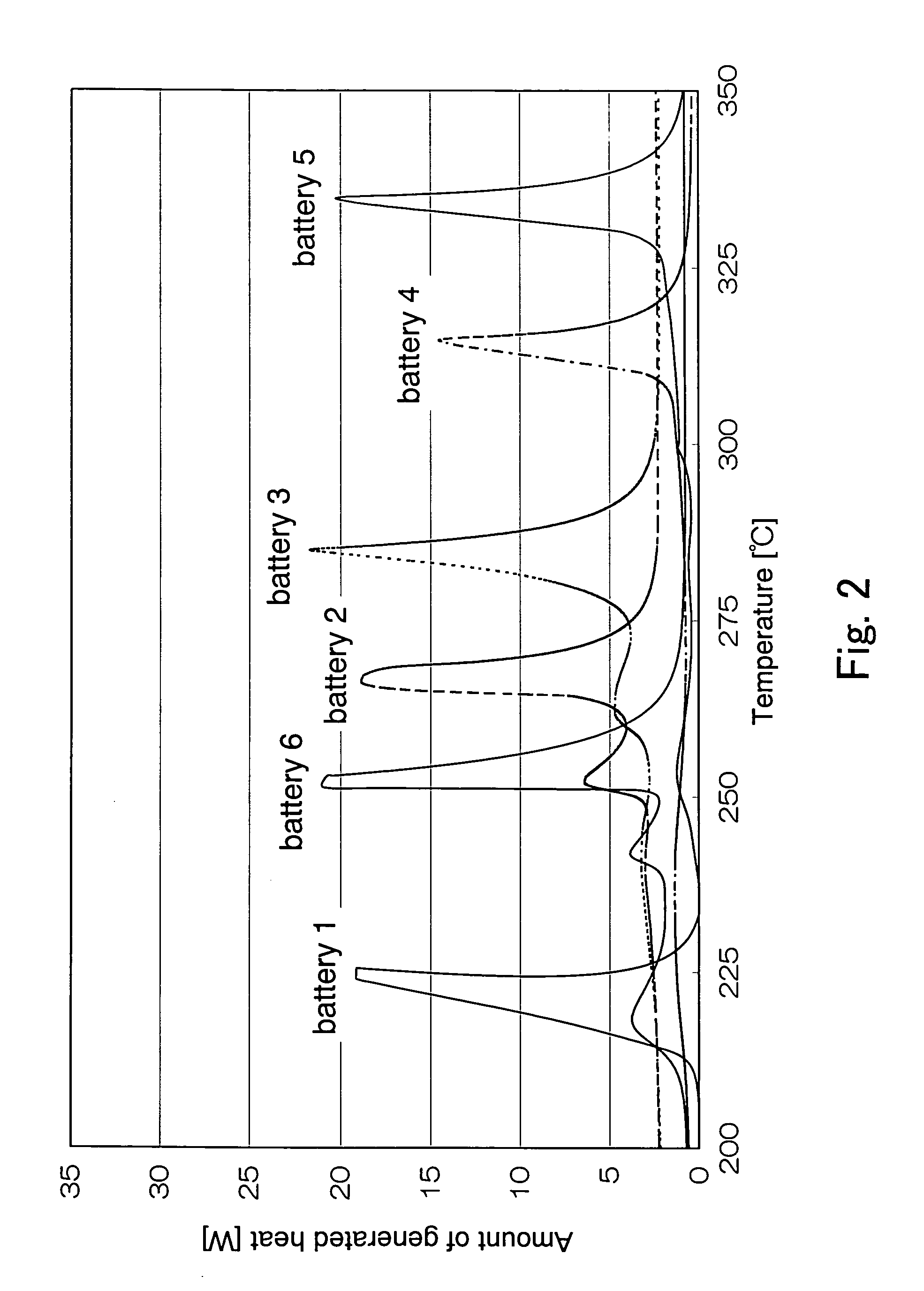Non-aqueous electrolyte secondary battery and method for producing active material substance used for anode thereof
a technology of non-aqueous electrolyte and secondary battery, which is applied in the direction of wound/folded electrode electrodes, sustainable manufacturing/processing, nickel compounds, etc., can solve the problems of thermal runaway, abnormal state of thermal runaway, and breakage of the balance between the amount of generated heat and the amount of released heat, so as to promote thermal runaway and high safety. , the effect of high stability of the active material of the positive electrode with respect to hea
- Summary
- Abstract
- Description
- Claims
- Application Information
AI Technical Summary
Benefits of technology
Problems solved by technology
Method used
Image
Examples
embodiment 1
[0039] Hereinafter, examples of the present invention will be described. In the following examples, DSC measurement was performed using the meter and the method described in
example 1
[0040] In Example 1, six lithium secondary batteries having different active materials for the positive electrodes were produced and the characteristics thereof were evaluated. Batteries 1 to 6 were produced such that they had the same diameter of the electrode plate group and the same capacity density of the negative electrode.
[0041] (Battery 1)
[0042] For the active material of the positive electrode of a battery 1, lithium nickelate (LiNiO.sub.2) produced in the following manner was used. First, lithium hydroxide (LiOH) and nickel hydroxide were mixed such that the atomic ratio of lithium and nickel was 1.0:1.0. This mixture was heated to 500.degree. C. at a temperature increase rate of 5.degree. C. / min in an oxygen atmosphere, and fired at 500.degree. C. for seven hours (first firing). The thus obtained product was cooled to 100.degree. C. or less, and pulverized to powder with a grinding pulverizer. The average particle diameter of the obtained powder was 15 .mu.m, and the conte...
example 2
[0063] In Example 2, three lithium secondary batteries made of different active materials for the positive electrodes were produced and the characteristics thereof were evaluated. The following batteries were designed such that the capacity density of the negative electrode was in the range from 230 Ah / kg to 250 Ah / kg. Furthermore, the thickness of the negative electrode plate and the lengths of the positive and negative electrode plates were adjusted, depending on the capacity density of the positive electrode.
[0064] (Battery 7)
[0065] For the active material of the positive electrode of a battery 7, a composite oxide expressed by a composition formula LiNi.sub.0.7Co.sub.0.2Al.sub.0.1O.sub.2 produced in the following manner was used. First, lithium hydroxide (LiOH.H.sub.2O), nickel hydroxide (Ni(OH).sub.2), tricobalt tetroxide (Co.sub.3O.sub.4), aluminum hydroxide (Al(OH).sub.3) were mixed such that the atomic ratio of lithium, nickel, cobalt and aluminum was 1.0:0.7:0.2:0.1. Then, ...
PUM
 Login to View More
Login to View More Abstract
Description
Claims
Application Information
 Login to View More
Login to View More - R&D
- Intellectual Property
- Life Sciences
- Materials
- Tech Scout
- Unparalleled Data Quality
- Higher Quality Content
- 60% Fewer Hallucinations
Browse by: Latest US Patents, China's latest patents, Technical Efficacy Thesaurus, Application Domain, Technology Topic, Popular Technical Reports.
© 2025 PatSnap. All rights reserved.Legal|Privacy policy|Modern Slavery Act Transparency Statement|Sitemap|About US| Contact US: help@patsnap.com



